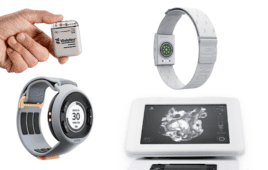Rosemont, Ill. The American Academy of Orthopaedic Surgeons
(AAOS) recently approved and released an evidence-based clinical
practice guideline on the diagnosis of periprosthetic joint
infections of the hip and knee. Clinical practice guidelines are
one avenue the Academy uses to ensure that patients receive high
quality care. A periprosthetic joint infection occurs when bacteria
or other foreign organisms enter the wound during or at any point
following joint replacement surgery, sometimes even years after
surgery. An infection can cause the joint to be painful or cause
the implant to loosen, often times resulting in the need for
revision surgery.
Research indicates that periprosthetic infection, also known as
“septic failure,” is the leading cause of total knee replacement
revision (25 percent) and the second-leading cause of total hip
replacement revision (15 percent) in the U.S.
“Every orthopaedic surgeon inevitably sees patients who come
back with a problem such as stiffness or pain in the joint,” said
Craig J. Della Valle, MD, associate professor of orthopaedic
surgery, Rush University Medical Center and chair of the physician
work group that developed the guideline. “It is very important to
determine whether the problem was caused by an infection or not,
primarily since treatments of septic versus aseptic joint failure
are so vastly different.”
However, Dr. Della Valle noted that a diagnosis of septic joint
failure can be very difficult to make and, since some diagnostic
procedures are somewhat costly and invasive, physicians should
ensure the most appropriate course of action is followed.
“The Academy created this clinical practice guideline to improve
the diagnostic process for patients who may have a periprosthetic
joint infection,” he said. “This serves as a point of reference and
an educational tool for both primary care physicians and
orthopaedic surgeons, streamlining the process while minimizing
costs, patient discomfort and risk. We were able to make several
strong recommendations due to the prevalence of good,
evidence-based data.”
The final physician-oriented guidelines for diagnosing
periprosthetic joint infection contain 15 recommendations overall,
including the following:
- Diagnosis should begin with a simple blood test for erythrocyte
sedimentation rate (ESR) and C-reactive protein (CRP). - In cases where both ESR and CRP are normal, chance of infection
is low. - Physicians should avoid starting antibiotic treatment until
after culture results are obtained.
“The recommendation to withhold antibiotics prior to obtaining
appropriate cultures is particularly important,” explains Dr. Della
Valle. While there may be rare situations when a patient has
systemic symptoms (such as fever and low blood pressure) that
require immediate antibiotic administration, in the vast majority
of cases, the indiscriminate use of antibiotics is discouraged.
“The first rule of treatment in medicine is always to make the
diagnosis first. Unfortunately, we often times see patients who are
given antibiotics prior to having appropriate cultures drawn from
within the joint that can lead to a delay in diagnosis and a
subsequent delay in appropriate treatment. Further, identification
of the specific bacteria which is causing the infection is
important in administering the most effective antibiotic to cure
the infection and if antibiotics are given before we can get a good
culture, we may not have the advantage of knowing exactly which
antibiotics to give as the cultures can turn negative even after a
single dose of antibiotics.”
Additional recommendations, particularly those involving the
diagnostic procedure known as joint aspiration (removal of fluid
from the joint for laboratory testing including an assessment of
the number of white blood cells, the type of white blood cells and
cultures of the fluid), vary depending on the location of the
arthroplasty (hip or knee), the probability of infection based on
established risk factors (including patient history) and whether or
not the patient is scheduled for reoperation on the affected
joint.
“Since the hip joint is deeper in the body than the knee,
aspiration is more difficult and more uncomfortable for the
patient,” said Dr. Della Valle. “Because of this difference, we
suggest a more selective approach for using this procedure on
patients with a total hip arthroplasty.”
The following recommendations were among those made by the work
group for patients being assessed for periprosthetic joint
infections who are scheduled for revision surgeries:
- multiple cultures should be obtained at the time of
reoperation; - the use of frozen sections of tissues adjacent to the implant
when infection has not already been established or excluded;
and - prophylactic antibiotics should be given prior to revision (or
repeat) surgery.
According to the work group, one key question that needs to be
addressed through further research is whether one single test can
be identified that will consistently allow clinicians to rule in or
rule out the presence of a periprosthetic infection in all
patients. For example, continued studies evaluating the efficacy
and cost-effectiveness of using advanced imagery and molecular
testing to diagnose periprosthetic joint infection are
warranted.




